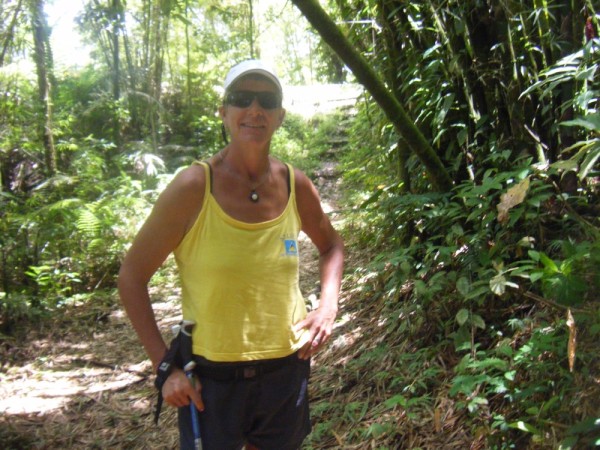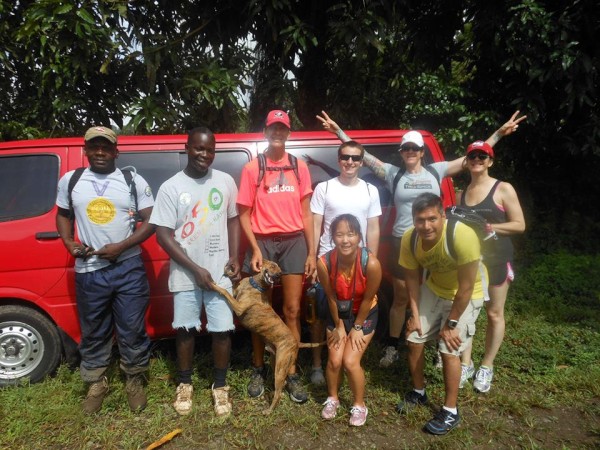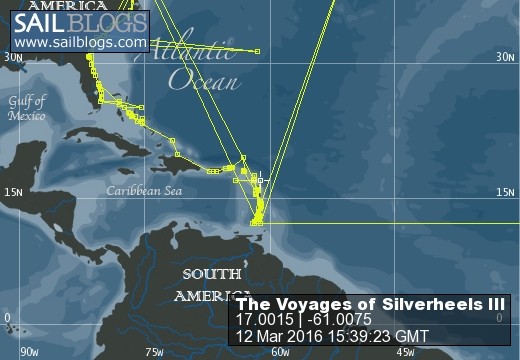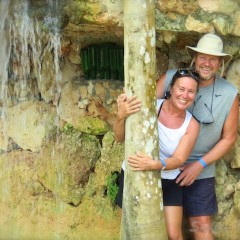
The Voyages of s/v Silverheels III
...a virtual ship's logbook, and some thoughtful (unabashed?) reflections on our sea-going experiences.
04 November 2017 | Somewhere in the Eastern Caribbean
18 October 2017 | Le Marin, Martinique in the French West Indies
25 January 2017 | Gosier, Guadeloupe
19 January 2017 | Le Gosier, Guadeloupe
19 January 2017 | Le Gosier, Guadeloupe
19 January 2017 | St Pierre, Martinique
06 January 2017
01 January 2017 | Fort Du France, Martinique
28 December 2016 | Grand Anse d'Arlet, Martinique
24 December 2016
14 November 2016 | St Anne, Martinique
06 October 2016 | St Anne, Martinique
04 October 2016
20 July 2016 | Rodney Bay, St Lucia
15 June 2016
15 June 2016
13 June 2016
13 June 2016 | Grand Anse d'Arlets
13 June 2016 | Grand Anse d'Arlets
09 May 2016 | Deshaies, Guadeloupe
Lost in Translation
31 March 2013 | Les Iles des Saintes, Guadeloupe
Lynn
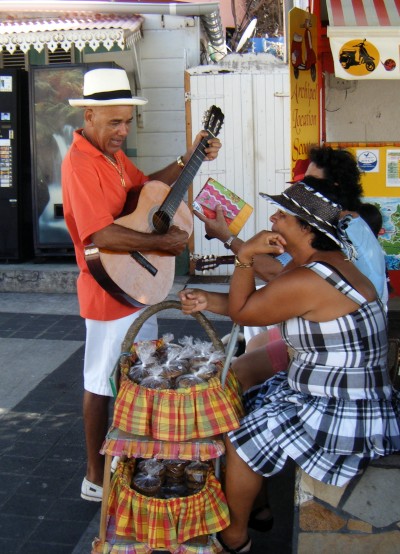
Since we have spent a fair amount of time in the French West Indies this winter, compounding our baguette and Nutella addictions, we have had the opportunity to develop our skills in French. I am by no means bilingual, but I can generally make myself understood most of the time, and the responses are getting a little easier to comprehend, although I still have to frequently point out (in French) that I listen quite slowly in French. After the smile I get, they slow down and I can "get the drift". We aren't anticipating discussions on world peace or the situation in North Korea any time in the near future, but we can communicate with more than gestures.
However, even when one understands the actual words involved, sometimes things still don't make sense. One of the perplexing things has been the names of the two main islands of Guadeloupe, Grande Terre and Basse Terre. Grande is large or bigger, and Basse generally means lower or lesser. Where the confusion lies is that the lower island is called Grande, and the one with all of the mountains is called the "low land" - huh? However, a discussion with Jean-Pierre from 'Absaroque' clarified things for us (and actually, for his wife, Denise, too). Apparently the practice for the French was to refer to the first island in a group they came to as the Grande Terre, and the second as the Basse Terre, topographical features not withstanding. Okay, I understand now, but it doesn't make sense to my Anglo way of thinking.
When I run, I frequently hear calls of "le courage", especially when I am going up a hill. I appreciate the support, but the other day it got me to thinking. It's nice when the mind finds something to occupy itself with when running, and it is an improvement over having a bad song repeating itself in your head for an hour. I thought about how the French (and English) word for fortitude is "courage", and how the French word for running is "courir", making the words suspiciously similar. How does running have anything to do with standing up to your adversaries or a challenge? Was it something to do with cowardice? Pretty darned unlikely, despite some of the jokes. When I returned to the boat after my run, with the obligatory baguette, I couldn't shake that line of thought. A little research has "courage" coming from the Latin root for heart (cor), whereas "courir" comes from the Latin root for run (cur). It has just been an evolution in spelling over the years that has made them so similar. Now my mind can go back to playing bad 80's music over and over again as I run.
I think many people have heard about product names that haven't done well in translation. The Chevy "Nova" bombed in Spanish speaking countries since "no va" means "no go", or to paraphrase, "doesn't run". Ken chortled this morning when I brought it to his attention that the toilet paper we like in the French islands is called "Dou-Dou". Actually, I never thought of it in those terms, I just thought of the slang for "soft". However, it is one of those things that can mean something entirely different in another language.
Translating into the other language can be unintentionally amusing, as well. We have seen many "multilingual" signs with spectacularly bad English. These aren't just little signs in front of a business, these are also in tourist publications and signs in touristy areas. It is like they plugged it into "Google Translate" or asked a Grade 9 English class to do it for homework. Regardless, it is obvious a fluent English speaker has never been asked to proofread the work. After all translation is a lot more than just changing the words.
Of course, translating between English speakers can be just as interesting at times.... But that has already been touched upon in an earlier blog.
However, even when one understands the actual words involved, sometimes things still don't make sense. One of the perplexing things has been the names of the two main islands of Guadeloupe, Grande Terre and Basse Terre. Grande is large or bigger, and Basse generally means lower or lesser. Where the confusion lies is that the lower island is called Grande, and the one with all of the mountains is called the "low land" - huh? However, a discussion with Jean-Pierre from 'Absaroque' clarified things for us (and actually, for his wife, Denise, too). Apparently the practice for the French was to refer to the first island in a group they came to as the Grande Terre, and the second as the Basse Terre, topographical features not withstanding. Okay, I understand now, but it doesn't make sense to my Anglo way of thinking.
When I run, I frequently hear calls of "le courage", especially when I am going up a hill. I appreciate the support, but the other day it got me to thinking. It's nice when the mind finds something to occupy itself with when running, and it is an improvement over having a bad song repeating itself in your head for an hour. I thought about how the French (and English) word for fortitude is "courage", and how the French word for running is "courir", making the words suspiciously similar. How does running have anything to do with standing up to your adversaries or a challenge? Was it something to do with cowardice? Pretty darned unlikely, despite some of the jokes. When I returned to the boat after my run, with the obligatory baguette, I couldn't shake that line of thought. A little research has "courage" coming from the Latin root for heart (cor), whereas "courir" comes from the Latin root for run (cur). It has just been an evolution in spelling over the years that has made them so similar. Now my mind can go back to playing bad 80's music over and over again as I run.
I think many people have heard about product names that haven't done well in translation. The Chevy "Nova" bombed in Spanish speaking countries since "no va" means "no go", or to paraphrase, "doesn't run". Ken chortled this morning when I brought it to his attention that the toilet paper we like in the French islands is called "Dou-Dou". Actually, I never thought of it in those terms, I just thought of the slang for "soft". However, it is one of those things that can mean something entirely different in another language.
Translating into the other language can be unintentionally amusing, as well. We have seen many "multilingual" signs with spectacularly bad English. These aren't just little signs in front of a business, these are also in tourist publications and signs in touristy areas. It is like they plugged it into "Google Translate" or asked a Grade 9 English class to do it for homework. Regardless, it is obvious a fluent English speaker has never been asked to proofread the work. After all translation is a lot more than just changing the words.
Of course, translating between English speakers can be just as interesting at times.... But that has already been touched upon in an earlier blog.
Comments
| Vessel Name: | Silverheels III |
| Vessel Make/Model: | Hinterhoeller, Niagara 35 Mk1 (1979) |
| Hailing Port: | Toronto |
| Crew: | Lynn Kaak and Ken Goodings |
| About: | After five summers and winters living on our boat in Toronto Harbour, we've exchanged those cold Canadian winters for Caribbean sunshine. "Nowadays, we have ice in our drinks, not under the boat." |
| Extra: |
The completely biased and unabashed musings from the crew of Silverheels III
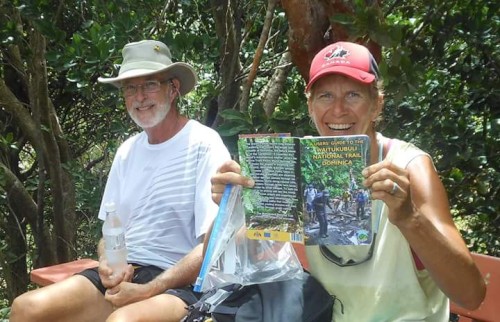
Who: Lynn Kaak and Ken Goodings
Port: Toronto














